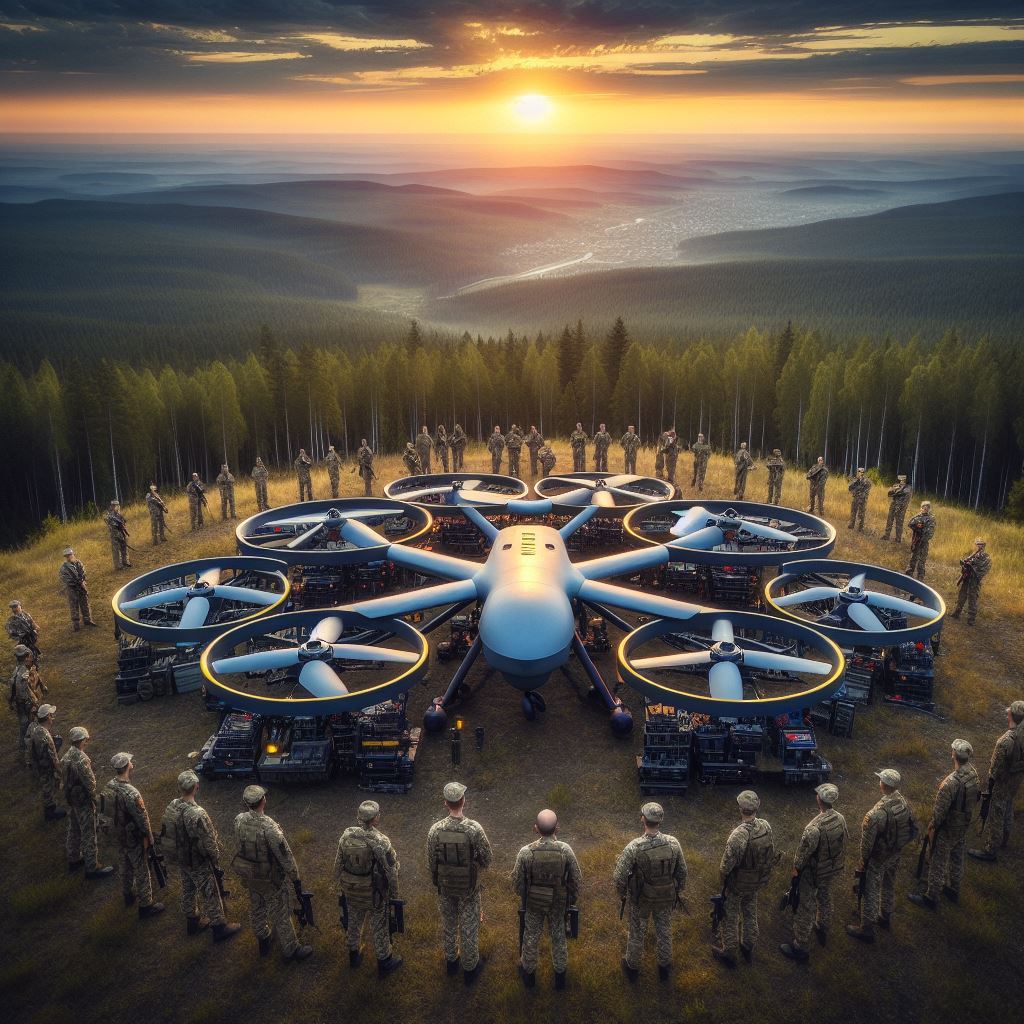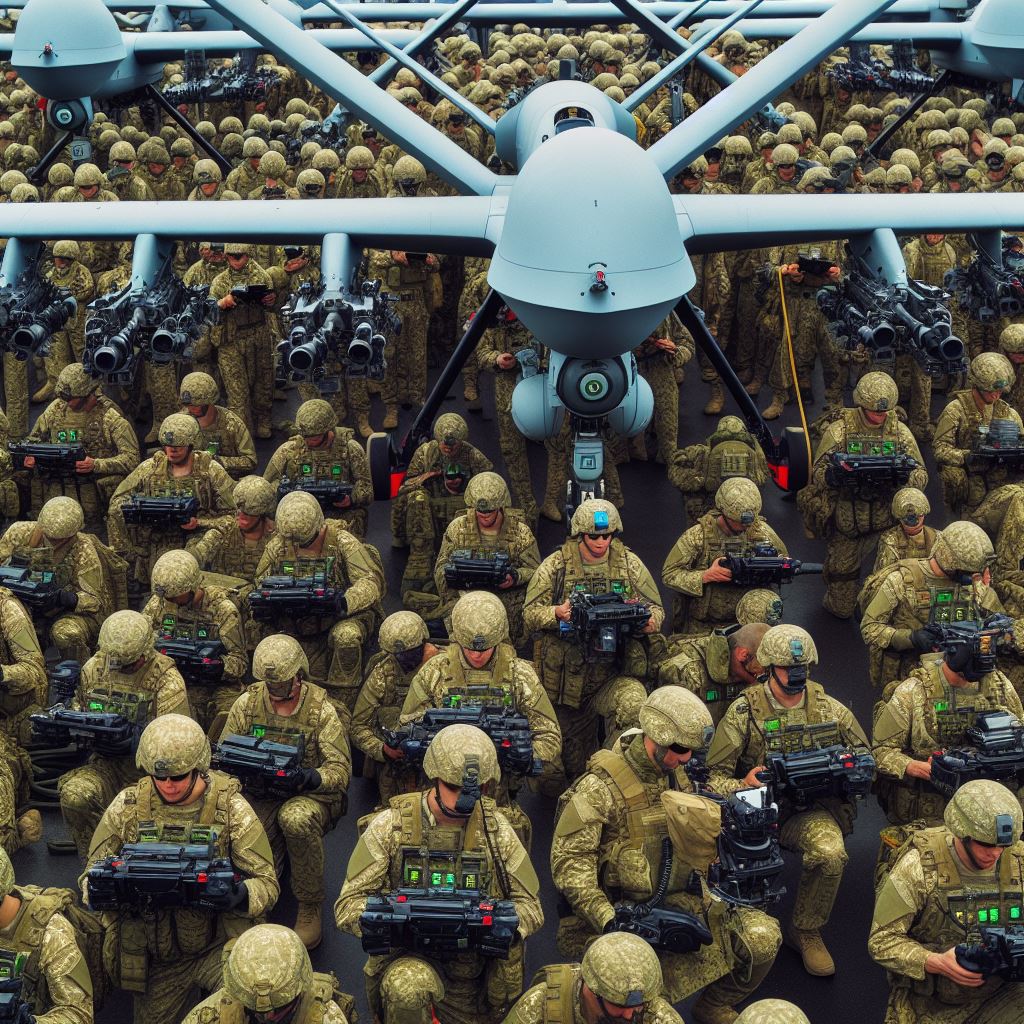俄羅斯受到無人機攻擊,損失相當慘重。
自與烏克蘭開戰以來,俄羅斯嚴重低估無人機的威脅。黑海艦隊在此期間承受巨大的損失,失去39艘戰艦,其中13艘已被擊沉或重創後無法修復,佔戰艦總數的三分之一。烏克蘭宣稱已成功對俄羅斯海軍的大型登陸艦“亞馬爾”號造成重創。為應對無人機的威脅,俄羅斯海軍目前正在加強無人機防禦的特訓。
而就在俄羅斯當地時間4月2日,位於韃靼斯坦共和國內的阿拉布加經濟特區遭受自殺無人機的空襲,地點離兩國邊境超過1000公里。目前已知有多人受傷。這個特區是全俄羅斯最大的工業生產特區。然而,烏克蘭當局對此沒有作出任何回應。
無人機,又稱為無人飛行器(Unmanned Aerial Vehicle,UAV),是一種不需要人駕駛的飛行器。它們通常是由遙控器、預先設定的航路或自主系統來控制和操作,可以執行各種任務,從民用應用到軍事用途。無人機在戰場上的功能和特點:
監視和情報收集:常用於監視和情報收集,可以在不暴露人員的情況下,提供即時的視角和情報。它們可以配備各種感測器和攝像頭,用於收集目標的位置、移動、數量和其他重要資訊。
目標標定:用於標定目標,包括地面目標、車輛、建築物等。它們可以提供高精度的定位和跟蹤功能,協助指揮官決定最有效的打擊方式。
空中打擊:某些無人機配備武器系統,可以執行空中打擊任務。這些無人機可以攜帶導彈、火箭或其他空對地武器,對目標進行打擊,從而減少對人員的風險。
情報、監視和偵察(ISR):在ISR方面扮演著重要角色。它們可以長時間在空中監視一定區域,提供持續的情報和情況報告。這對於監控敵人的活動、探測地雷、搜尋救援行動等任務都非常有用。
對地攻擊支援:用於提供對地攻擊支援,包括空中轟炸、火力支援和對敵方基地的打擊。它們可以協助地面部隊或其他空中平台,精確地定位和摧毀敵方目標。
情報戰:還可以用於情報戰,例如干擾敵方通信、收集電子情報和進行無線電監聽。這可以幫助部隊更好地了解敵方意圖和通訊方式。
總的來說,無人機在戰場上具有廣泛的應用,可以提高作戰效率、降低風險,同時也加強指揮官對戰場的掌握能力。然而,它們也引發一些倫理和法律問題,如隱私權、敵對行動中的法律義務等,需要嚴密的監管和規範。
Since the beginning of the conflict with Ukraine, Russia has severely underestimated the threat posed by drones. During this period, the Black Sea Fleet has suffered significant losses, with 39 warships lost, including 13 either sunk or irreparably damaged, accounting for one-third of the total warship count. Ukraine claims to have successfully inflicted heavy damage on the Russian Navy's large landing ship "Amur."
In response to the drone threat, the Russian Navy is currently intensifying its training in drone defense. However, on April 2nd, according to local Russian time, the Alabuga Special Economic Zone located within the Republic of Tatarstan was subjected to a suicide drone attack, over 1000 kilometers away from the border of both countries. Several casualties have been reported. This economic zone is the largest industrial production zone in all of Russia. Nevertheless, Ukrainian authorities have yet to issue any response.
A drone, also known as an Unmanned Aerial Vehicle (UAV), is an aircraft that does not require a human pilot. They are typically controlled and operated by remote control, pre-programmed routes, or autonomous systems, and can execute various missions ranging from civilian applications to military purposes.
Functions and characteristics of drones on the battlefield include:
Surveillance and Intelligence Gathering: Drones are commonly used for surveillance and intelligence gathering, providing real-time perspectives and information without exposing personnel. They can be equipped with various sensors and cameras to collect data on target positions, movements, quantities, and other critical information.
Targeting: Drones are used for targeting, including ground targets, vehicles, buildings, and more. They provide high-precision positioning and tracking capabilities, assisting commanders in determining the most effective strike methods.
Aerial Strikes: Some drones are equipped with weapon systems and can execute aerial strike missions. These drones can carry missiles, rockets, or other air-to-ground weapons to engage targets, thereby reducing risks to personnel.
Intelligence, Surveillance, and Reconnaissance (ISR): Drones play a crucial role in ISR. They can surveil specific areas for extended periods, providing continuous intelligence and situational reports. This is useful for monitoring enemy activities, detecting mines, conducting search and rescue operations, and more.
Ground Attack Support: Drones are used to provide ground attack support, including aerial bombing, fire support, and strikes against enemy bases. They can assist ground forces or other aerial platforms in accurately locating and destroying enemy targets.
Electronic Warfare: Drones can also be used in electronic warfare, such as jamming enemy communications, collecting electronic intelligence, and conducting radio monitoring. This helps military units better understand enemy intentions and communication methods.
Overall, drones have wide-ranging applications on the battlefield, enhancing operational efficiency, reducing risks, and strengthening commanders' control over the battlefield. However, they also raise ethical and legal issues such as privacy rights and legal obligations in hostile actions, requiring strict regulation and oversight.


照片:DALLE3
- 1
- 2
- 3
- 4
